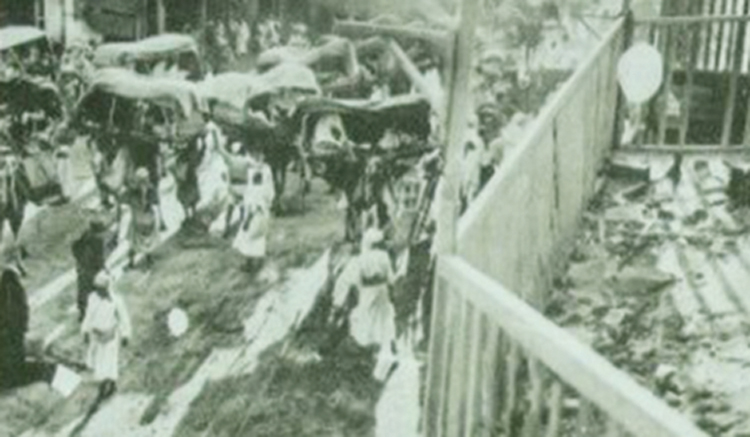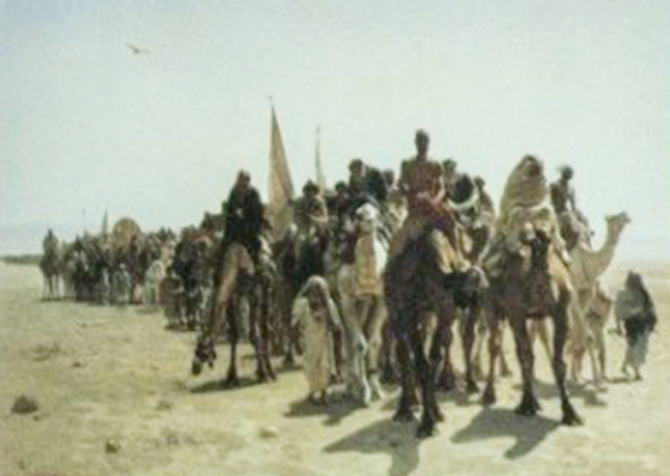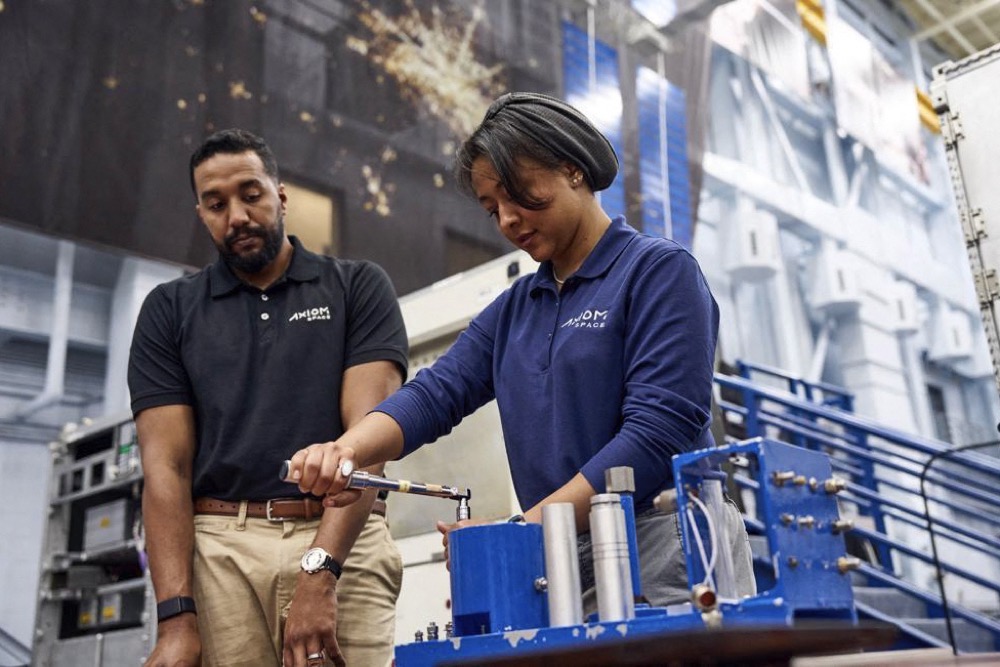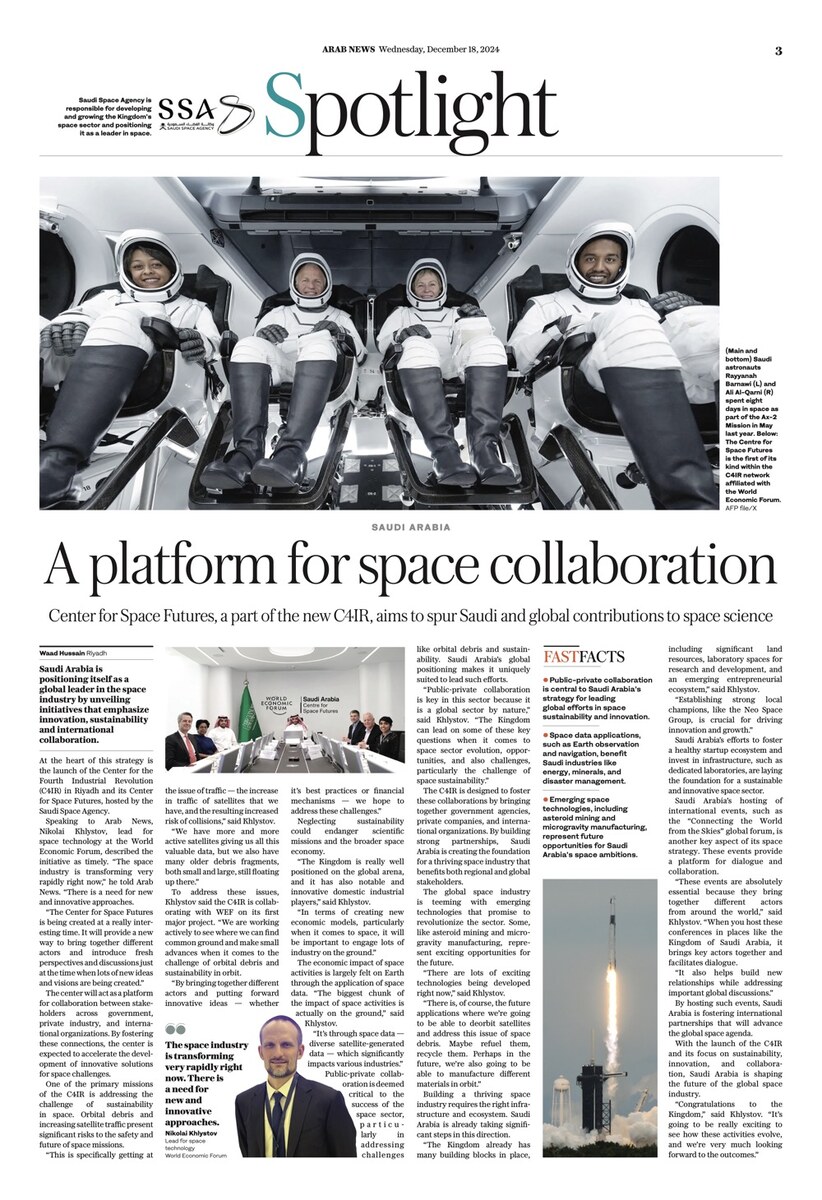JEDDAH: An exhibition about the Hajj takes visitors on a journey through the ages with three halls exploring different aspects of the holy pilgrimage, the Saudi Press Agency reported.
Labbaik: The Hajj Journey Through the Ages was inaugurated earlier this month by the Saudi minister of Islamic affairs, dawah and guidance, Sheikh Abdullatif Al-Asheikh.
The first hall introduces visitors to the magic of Makkah, which is the focus of Muslim attention around the world and plays a central role in the Hajj.
Visitors learn about Prophet Abraham, his son Ishmael, wife Hajar and the Zamzam well miracle, when she went looking for water. She ran seven times between the two hills of Safa and Marwa — an act that is a compulsory part of the Hajj — and Allah’s response was to create a water spring at Ishamel’s feet.
The hall also features the history of the Kaaba from the Prophet Abraham’s time until its present form, which was ordered by Caliph Abd Al-Malik ibn Marwan.
Visitors learn about the Grand Mosque, the Kaaba’s interior, and Makkah’s rights and duties toward every Muslim.

Photographs covering different time periods, and sketches dating back more than three centuries are featured in the second hall of the Hajj exhibition. (SPA)
Observations
They can watch a film about the Grand Mosque’s history, which is based on the observations of travelers, historians and artists from the last four centuries, and according to descriptions from pilgrims who have completed the Hajj.
The hall also includes the first photos taken of the Grand Mosque, along with recent color images.
The second hall takes a different sort of trip down memory lane as visitors can learn about the Hajj journey since the beginning of Islam. It features the hard paths and roads that pilgrims used to take to Makkah from all over the world, on camelback or on foot, facing danger in the form of thieves, bandits and harsh weather conditions.
Visitors can see photographs covering different time periods, and sketches dating back more than three centuries.

Photographs covering different time periods, and sketches dating back more than three centuries are featured in the second hall of the Hajj exhibition. (SPA)
Holiest of missions
There are Hajj certificates on display, documents pilgrims used to obtain on behalf of others as proof the pilgrimage had been completed by the person assigned with this holiest of missions.
The last part of this hall introduces visitors to the transformation journey in Saudi Arabia. As soon as the Saudi state was established and King Abdul Aziz Al-Saud arrived in Makkah, his priority was to establish greater security for pilgrims. He removed risks and implemented measures so that Muslims could visit Makkah and Madinah in ease and with peace of mind, such as modern transportation and better infrastructure. Visitors also have a chance to read the messages from Saudi kings to pilgrims.
The third and final hall focuses on the Kingdom’s efforts to serve pilgrims and there is a section about health awareness.
The exhibition has been organized by the Ministry of Islamic Affairs, Dawah and Guidance in partnership with Al-Rajhi Investment Group.
It runs until Aug. 21 and is open daily from 9 a.m to 10 p.m. It is located at the Tilal Al-Naseem Complex in Makkah, which is about 10 kilometers from the Grand Mosque.



































